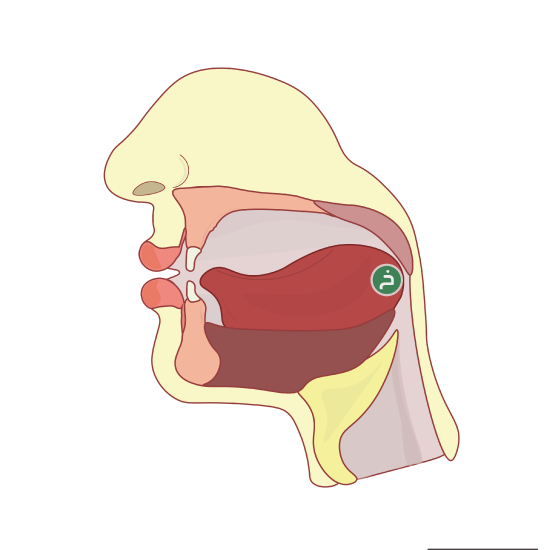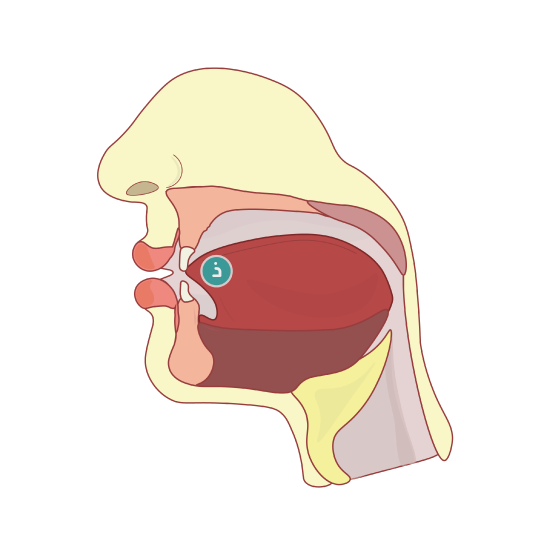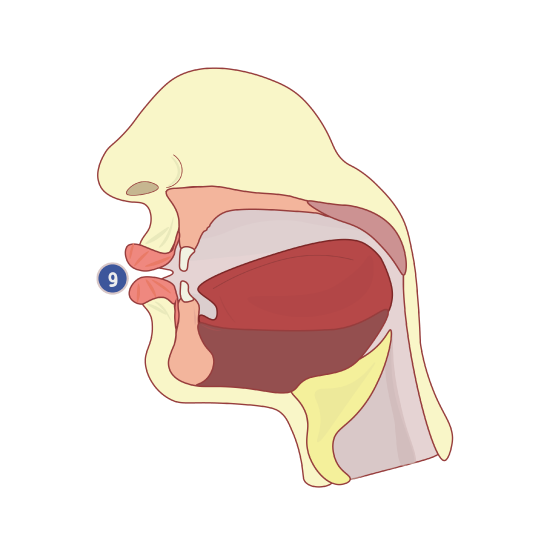3.1: Letters
- Page ID
- 151318
\( \newcommand{\vecs}[1]{\overset { \scriptstyle \rightharpoonup} {\mathbf{#1}} } \)
\( \newcommand{\vecd}[1]{\overset{-\!-\!\rightharpoonup}{\vphantom{a}\smash {#1}}} \)
\( \newcommand{\dsum}{\displaystyle\sum\limits} \)
\( \newcommand{\dint}{\displaystyle\int\limits} \)
\( \newcommand{\dlim}{\displaystyle\lim\limits} \)
\( \newcommand{\id}{\mathrm{id}}\) \( \newcommand{\Span}{\mathrm{span}}\)
( \newcommand{\kernel}{\mathrm{null}\,}\) \( \newcommand{\range}{\mathrm{range}\,}\)
\( \newcommand{\RealPart}{\mathrm{Re}}\) \( \newcommand{\ImaginaryPart}{\mathrm{Im}}\)
\( \newcommand{\Argument}{\mathrm{Arg}}\) \( \newcommand{\norm}[1]{\| #1 \|}\)
\( \newcommand{\inner}[2]{\langle #1, #2 \rangle}\)
\( \newcommand{\Span}{\mathrm{span}}\)
\( \newcommand{\id}{\mathrm{id}}\)
\( \newcommand{\Span}{\mathrm{span}}\)
\( \newcommand{\kernel}{\mathrm{null}\,}\)
\( \newcommand{\range}{\mathrm{range}\,}\)
\( \newcommand{\RealPart}{\mathrm{Re}}\)
\( \newcommand{\ImaginaryPart}{\mathrm{Im}}\)
\( \newcommand{\Argument}{\mathrm{Arg}}\)
\( \newcommand{\norm}[1]{\| #1 \|}\)
\( \newcommand{\inner}[2]{\langle #1, #2 \rangle}\)
\( \newcommand{\Span}{\mathrm{span}}\) \( \newcommand{\AA}{\unicode[.8,0]{x212B}}\)
\( \newcommand{\vectorA}[1]{\vec{#1}} % arrow\)
\( \newcommand{\vectorAt}[1]{\vec{\text{#1}}} % arrow\)
\( \newcommand{\vectorB}[1]{\overset { \scriptstyle \rightharpoonup} {\mathbf{#1}} } \)
\( \newcommand{\vectorC}[1]{\textbf{#1}} \)
\( \newcommand{\vectorD}[1]{\overrightarrow{#1}} \)
\( \newcommand{\vectorDt}[1]{\overrightarrow{\text{#1}}} \)
\( \newcommand{\vectE}[1]{\overset{-\!-\!\rightharpoonup}{\vphantom{a}\smash{\mathbf {#1}}}} \)
\( \newcommand{\vecs}[1]{\overset { \scriptstyle \rightharpoonup} {\mathbf{#1}} } \)
\( \newcommand{\vecd}[1]{\overset{-\!-\!\rightharpoonup}{\vphantom{a}\smash {#1}}} \)
\(\newcommand{\avec}{\mathbf a}\) \(\newcommand{\bvec}{\mathbf b}\) \(\newcommand{\cvec}{\mathbf c}\) \(\newcommand{\dvec}{\mathbf d}\) \(\newcommand{\dtil}{\widetilde{\mathbf d}}\) \(\newcommand{\evec}{\mathbf e}\) \(\newcommand{\fvec}{\mathbf f}\) \(\newcommand{\nvec}{\mathbf n}\) \(\newcommand{\pvec}{\mathbf p}\) \(\newcommand{\qvec}{\mathbf q}\) \(\newcommand{\svec}{\mathbf s}\) \(\newcommand{\tvec}{\mathbf t}\) \(\newcommand{\uvec}{\mathbf u}\) \(\newcommand{\vvec}{\mathbf v}\) \(\newcommand{\wvec}{\mathbf w}\) \(\newcommand{\xvec}{\mathbf x}\) \(\newcommand{\yvec}{\mathbf y}\) \(\newcommand{\zvec}{\mathbf z}\) \(\newcommand{\rvec}{\mathbf r}\) \(\newcommand{\mvec}{\mathbf m}\) \(\newcommand{\zerovec}{\mathbf 0}\) \(\newcommand{\onevec}{\mathbf 1}\) \(\newcommand{\real}{\mathbb R}\) \(\newcommand{\twovec}[2]{\left[\begin{array}{r}#1 \\ #2 \end{array}\right]}\) \(\newcommand{\ctwovec}[2]{\left[\begin{array}{c}#1 \\ #2 \end{array}\right]}\) \(\newcommand{\threevec}[3]{\left[\begin{array}{r}#1 \\ #2 \\ #3 \end{array}\right]}\) \(\newcommand{\cthreevec}[3]{\left[\begin{array}{c}#1 \\ #2 \\ #3 \end{array}\right]}\) \(\newcommand{\fourvec}[4]{\left[\begin{array}{r}#1 \\ #2 \\ #3 \\ #4 \end{array}\right]}\) \(\newcommand{\cfourvec}[4]{\left[\begin{array}{c}#1 \\ #2 \\ #3 \\ #4 \end{array}\right]}\) \(\newcommand{\fivevec}[5]{\left[\begin{array}{r}#1 \\ #2 \\ #3 \\ #4 \\ #5 \\ \end{array}\right]}\) \(\newcommand{\cfivevec}[5]{\left[\begin{array}{c}#1 \\ #2 \\ #3 \\ #4 \\ #5 \\ \end{array}\right]}\) \(\newcommand{\mattwo}[4]{\left[\begin{array}{rr}#1 \amp #2 \\ #3 \amp #4 \\ \end{array}\right]}\) \(\newcommand{\laspan}[1]{\text{Span}\{#1\}}\) \(\newcommand{\bcal}{\cal B}\) \(\newcommand{\ccal}{\cal C}\) \(\newcommand{\scal}{\cal S}\) \(\newcommand{\wcal}{\cal W}\) \(\newcommand{\ecal}{\cal E}\) \(\newcommand{\coords}[2]{\left\{#1\right\}_{#2}}\) \(\newcommand{\gray}[1]{\color{gray}{#1}}\) \(\newcommand{\lgray}[1]{\color{lightgray}{#1}}\) \(\newcommand{\rank}{\operatorname{rank}}\) \(\newcommand{\row}{\text{Row}}\) \(\newcommand{\col}{\text{Col}}\) \(\renewcommand{\row}{\text{Row}}\) \(\newcommand{\nul}{\text{Nul}}\) \(\newcommand{\var}{\text{Var}}\) \(\newcommand{\corr}{\text{corr}}\) \(\newcommand{\len}[1]{\left|#1\right|}\) \(\newcommand{\bbar}{\overline{\bvec}}\) \(\newcommand{\bhat}{\widehat{\bvec}}\) \(\newcommand{\bperp}{\bvec^\perp}\) \(\newcommand{\xhat}{\widehat{\xvec}}\) \(\newcommand{\vhat}{\widehat{\vvec}}\) \(\newcommand{\uhat}{\widehat{\uvec}}\) \(\newcommand{\what}{\widehat{\wvec}}\) \(\newcommand{\Sighat}{\widehat{\Sigma}}\) \(\newcommand{\lt}{<}\) \(\newcommand{\gt}{>}\) \(\newcommand{\amp}{&}\) \(\definecolor{fillinmathshade}{gray}{0.9}\)In this section, you will be able to:
- Read, write, and type the letters of two-way connectors ج , ح , خ and three letters of one-way connectors د , ذ , و in their different shapes.
- Pronounce the letters د , ذ , و , ج , ح , خ with short and long vowels.
The letters
| Letter Name اسم الحرف |
Letter shape شكل الحرف |
|---|---|
| Jeem | ج |
| H'aa | ح |
| Khaa | خ |
| Daal | د |
| Thaal | ذ |
| Waw | و |
The two-way connections ج ح خ in four forms
The Letter Jeem ج
Pronunciation of letter ج
The letter ج is pronounced from the middle of the tongue, and what lies opposite to it from the middle of the roof of the mouth. The letter ج is often mispronounced by Arabs and non-Arabs, with a softer sound, like the French “J” as in the word “bonjour.” The letter ج is pronounced in Egyptian dialect as “G” in English. For example, the name “Jamal” is pronounced as “Gamal” in Egyptian. In the Syrian dialect, it is pronounced like the “J” in “Java.” To pronounce ج correctly, you must use the middle of the tongue, and then concentrate on not allowing any sound or air out. (See figure \(\PageIndex{1}\))

The tables below show the sound of the letter Jeem with short and long vowels.
| Sukoon | Dhama | Kasra | Fataha |
|---|---|---|---|
| جْ | جُ | جِ | جَ |
The letter ج with long vowel
| The long vowel “و ” oo | The long vowel ‘’ي” ee | The long vowel “ا” aa |
|---|---|---|
| جو | جي | جا |
The writing of letter ج
To write the independent ج, begin at a point above the line, make a small hook, draw a line straight across, then change direction and swing down below the line into the tail. Finally, place the dot in the middle, in the “belly” of the letter. However, the writing of letter ج is different in handwriting and print.
To write ج as initial position, begin with the hook, as you did with independent form, then slant down toward the line into a point just above the line. Then, instead of curving down into the tail, continue into connecting segment جـ. Place the dot underneath the hook of the letter.
The medial shape of the letter jeem is like this ــجـ it is the same shape of the jeem when it comes as initial but, it has continuing line from left and right side so, it can be linked to other letters when it comes in the middle of the word, then the dot goes underneath the hook of the letter.
For the final shape ــج draw a connecting segment from the line, then draw upwards and over. The final position has the same tail as the independent position. (Watch the video)
| Final | Medial | Initial | Isolated |
|---|---|---|---|
| ــج | ــجـ | جــ |
ج |
Watch the video to learn how to write the letter Jeem
Which of the following is in the Medial shape.
ــج - ج - جــ - ــجـ
- Answer
-
ــجـ
The Letter H'aa ح
The letter Ha'a ح represents a sound that is pronounced in the middle of the throat. It has no equivalent in English.
The Technical Way for Pronouncing the letter ح. Open your mouth, make a raspy (rough) “h” sound. Then, tighten the muscles so that air can just barely squeeze through your throat. You should be able to feel your Adam’s apple move. Another hint to help you articulate the letter ح Is to think of the throat squeezing against itself from the middle and try to pronounce it from that point of pressure. There is plenty of air that runs with this letter. You should feel the friction in the middle of your throat. A final method to find the articulation point of the letter ح is to try to cough, place your hand on your throat and feel your throat. That point is the articulation of the letter ح. (See the figure \(\PageIndex{2}\))

The tables below show the sound of the letter H'aa with short and long vowels.
| Sukoon | Dhama | Kasra | Fataha |
|---|---|---|---|
| حْ | حُ | حِ | حَ |
The letter ح with long vowel
| The long vowel “و ” oo | The long vowel ‘’ي” ee | The long vowel “ا” aa |
|---|---|---|
| حو | حي | حا |
The letter ح is a connecting letter and is written like the letter ج but without the dot. (Watch the video)
| Final | Medial | Initial | Isolated |
|---|---|---|---|
| ــح | ــحـ | حـ |
ح |
Watch the video to learn how to write the letter H'aa
The name of the vowel on the letter حَ is.
Kasra / Fataha / Dhama / Sukoon
- Answer
-
Fataha
The Letter Khaa خ
To pronounce the letter خ, say “kh” and pay attention to where the back of your tongue hits the back of the roof of your mouth and cuts off the air flow. Instead of closing off the air flow with the back of your tongue completely, block it partially and you will be able to produce the sound. The articulation point of the letter خ is at the closest part of the throat (the beginning of the throat), or the closest to the mouth. (See figure \(\PageIndex{3}\))

The tables below show the sound of the letter Khaa with short and long vowels.
| Sukoon | Dhama | Kasra | Fataha |
|---|---|---|---|
| خْ | خُ | خِ | جَ |
The letter خ with long vowel
| The long vowel “و ” oo | The long vowel ‘’ي” ee | The long vowel “ا” aa |
|---|---|---|
| خو | خي | خا |
The letter خ is a connecting letter, and it is written like the letter ج and ح, but the dot is placed above the letter. (Watch the video)
| Final | Medial | Initial | Isolated |
|---|---|---|---|
| ــخ | ــخـ | خـ |
خ |
Watch the video to learn how to write the letter Khaa
The long vowel و oo with the letter Khaa it gives the sound of.
خا / خو / خي
- Answer
-
خو
The one-way connections د ذ و in shapes forms.
The Letter Daal د
This letter is pronounced like a clear, frontal “d” in English, as in the word “deep” and not like the “d” sound in the word “puddle”. The articulation point of the letter د is the tongue, and the pronunciation of the letter is from the top side of the tip of the tongue and the gum line of the two front upper incisors. The common mistake in the pronunciation of the letter د is placing the tongue further back in the mouth, like English “d”. (See figure \(\PageIndex{4}\))

The tables below show the sound of the letter Daal with short and long vowels.
| Sukoon | Dhama | Kasra | Fataha |
|---|---|---|---|
| دْ | دُ | دِ | دَ |
The letter د with long vowel
| The long vowel “و ” oo | The long vowel ‘’ي” ee | The long vowel “ا” aa |
|---|---|---|
| دو | دي | دا |
This letter does not connect to any letter that follows it “left side”, which means it has only one connector on the right side. Therefore, to write the initial د, begin above the line and slant down, and just before reaching the line, angle sharply and finish along the line. It is essential to keep the curve of the body of this letter less than 90 degrees and above the line.
When writing د in the medial and final positions, begin from the connecting segment and draw the top half of the letter, then trace your line back down, make a sharp angel and finish ــد (Watch the video)
| Final | Medial | Initial | Isolated |
|---|---|---|---|
| ــد | ــد | د | د |
Watch the video to learn how to write the letter Daal
The shape of د is in.
Final shape / Initial shape
- Answer
-
It can be in both shapes
The Letter Thaal ذ
The letter ذ represents the other sound of “th” like the sound of “the” in the word “other”. The articulation place of the letter ذ is the bottom tip of the tongue and the top edge of the two front lower incisors, and the top tip of the tongue and the bottom edges of the two front upper incisors.
There is a small space left between the tip of the tongue and the plates of the teeth when the pronouncing the letter ذ. The letter ذ is many times mispronounced as a plain “z”. The solution to mispronunciation is again using the top of the tip of the tongue and the bottom edges of the two front teeth (incisors). There should be enough protrusion of the tongue tip so that it is visible to the observer. (See figure \(\PageIndex{5}\))

The tables below show the sound of the letter Thaal with short and long vowels.
| Sukoon | Dhama | Kasra | Fataha |
|---|---|---|---|
| ذْ | ذُ | ذِ | ذَ |
The letter ذ with long vowel
| The long vowel “و ” oo | The long vowel ‘’ي” ee | The long vowel “ا” aa |
|---|---|---|
| ذو | ذي | ذا |
To write the letter ذ it is the same way you write the letter د, but a dot is placed above the letter. (Watch the video)
| Final | Medial | Initial | Isolated |
|---|---|---|---|
| ــذ | ــذ | ذ | ذ |
Watch the video to learn how to write the letter Thaal
True or Falls
The letter ذ can go under line when we write it .
- Answer
-
Falls.
The Letter Waw و
The letter Waw و has two functions like the letter Yaa ي. The first function is as the long vowel و. The second function is as a consonant. The consonant و can be preceded or followed by a long vowel, or it can or carry a short vowel. It is pronounced “w” as in well, howl, or “wh” in what, why, whale.
The articulation point of the letter waw “و” is the two lips, and it is articulated by forming a circle with both lips without them meeting completely, and pointing the lips to the front. (See figure \(\PageIndex{6}\))

The tables below show the sound of the letter Waw with short and long vowels.
| Sukoon | Dhama | Kasra | Fataha |
|---|---|---|---|
| وْ | وُ | وِ | وَ |
The letter و with long vowels
| The long vowel “و ” oo | The long vowel ‘’ي” ee | The long vowel “ا” aa |
|---|---|---|
| وو | وي | وا |
The letter و is only connects from one side – the preceding letter – if the preceding letter also has a connector. To write the independent و, begin on the line, make a loop, move clockwise and upwards to the left, and then swing down into the tail, which should dip well below the line.
When writing و in the medial and final positions, begin from the connecting segment and draw a circle of the letter و above the line, and extend the line of و under the line with making a simple curve. (Watch the video)
| Final | Medial | Initial | Isolated |
|---|---|---|---|
| ــو | ــو | و | و |
Watch the video to learn how to write the letter Waw
The ي with the letter Wow وي is
Long vowel / Short vowel
- Answer
-
Long vowel
Activity 1
Write the name of the letter in English.
Activity 2
Write the letters ج ح خ د ذ و in three forms with short vowels, following the format. You can check your answer from the explanation above under each letter.
- Initial shape with Dhama.
- Medial shape with Fatha.
- Final shape with Kasra.
Activity 3
Choose the correct letter
Activity 4
Connect the letters to form a word as showing in the example and try to pronounce it as you write.
Example: ذُ + ب + ا + ب = ذُباب
= ب + ا + ب
= ّحُ + ب
= أُ +خ + ت + ي
= بَ + ي + ت
= ت + و + ت
= أ + ث + ا + ث
= ثِ + ي + ا + ب
= خَ + د
= و + د
= ن + ا + ي
= د + ا + ر
= ثَ + و + ب
- Answer
-
باب
حُبّ
أُختي
بَيت
توت
أثاث
ثِياب
خَد
ود
ناي
دار
ثَوب

